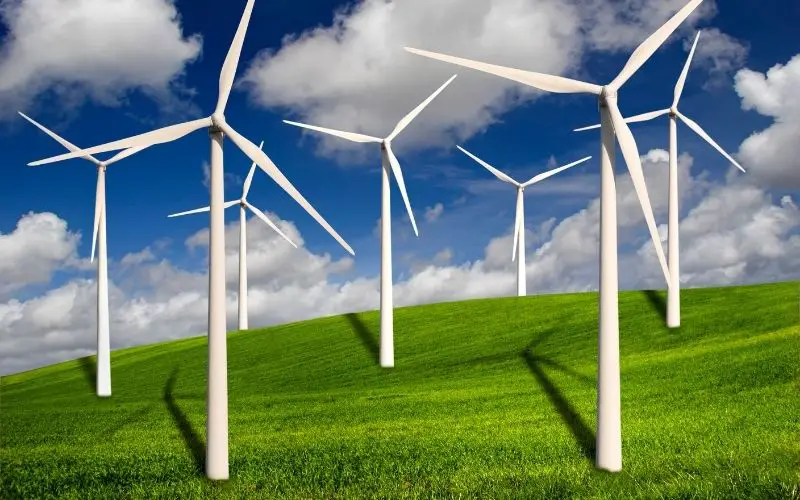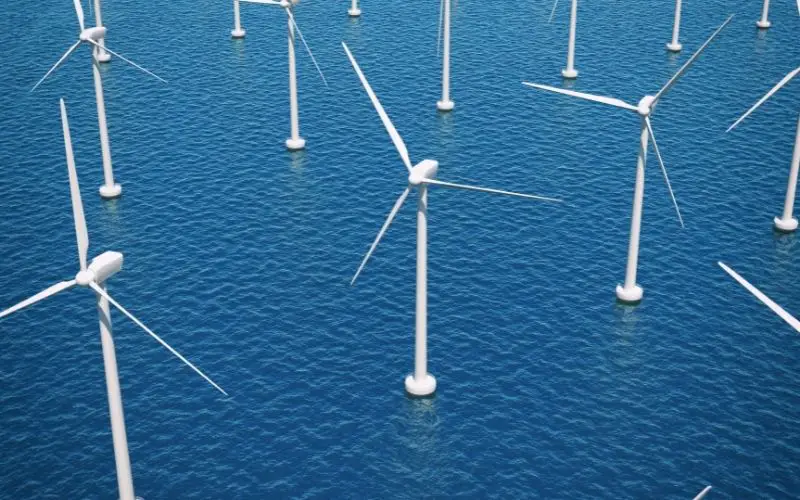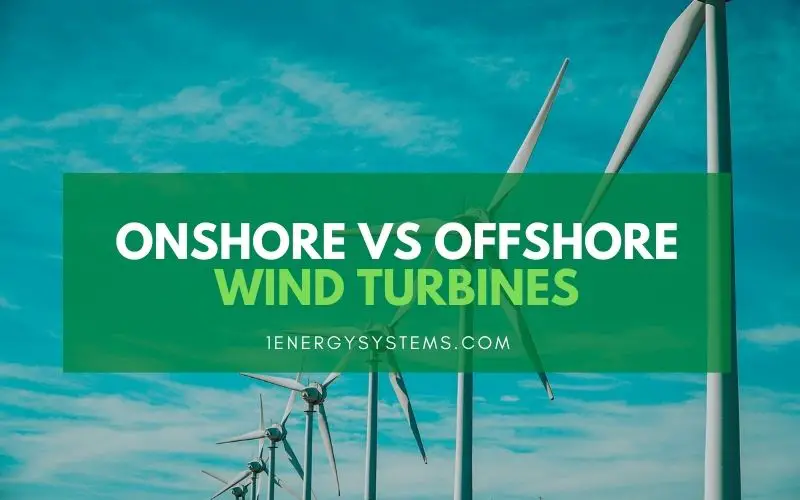Wind energy is a widely available source of renewable energy. Onshore wind turbines are located on land, while offshore are set up in water bodies such as oceans and seas. An ideal location is based on wind patterns, speed, and the availability of space. Evaluation of the benefits of onshore and offshore wind farms pros and cons is key to understanding the best source to supply reliable, efficient electricity
Parts of a wind turbine
1. Nacelle
The nacelle is found at the top of the tower and houses components such as gearbox, controller, generator, and brake assembly. The wind direction is measured by the vane, while the speed is measured by the anemometer. The information is fed into the controller which assists in regulating the functioning of the wind turbine.
2. Rotor
The rotor is made of blades and the hub that holds and connects the blades. The turbine blades’ rotation helps in the conversion of the wind’s kinetic energy to mechanical energy.
3. Generator
Rotor’s mechanical energy is converted to electricity by the generator. The gearbox is utilized to inverse the wind speed which in turn is used to rotate the generator. The constant speed is desirable to ensure the electricity generated has a constant frequency.
4. Turbine tower
Circular steel that provides support for the nacelle, rotor, and blades. Tall towers are used to capture higher wind velocities that are used to generate electricity. Large, stronger, and hollow blades are desirable because they generate more energy.
5. Foundation
Large concrete block used to support the tower firmly for uninterrupted functionality. The foundation or base is underground on land and can be floating in offshore wind farms.
Types of Wind Turbines based on Alignment
Horizontal-axis wind turbines
Horizontal-axis wind turbines are the common wind turbines that operate “upwind” and have the blades positioned at top of the turbine tower. The majority of the horizontal-axis wind turbines have three blades that face the wind. The wind turbines rotating axis are parallel to the ground.
Vertical-axis wind turbines
vertical-axis wind turbines are omni-direction and operate without adjustment. The rotor shafts are vertically aligned, allowing them to be powered by 360-degree wind. Major models include the giro mill model, Savonius rotor model, and Gorlov helical model,
Operation principle of a wind turbine
The operation of the wind turbine is based on wind flow that creates an aerodynamic force on the turbine blade. The pressure difference between the sides of the blades causes lift and drag force, which in turn propels the rotor.
The rotation of the rotor causes the spinning of the generator, leading to generation of the electricity. Thus, the generation of electricity using wind turbines is based on the utilization of aerodynamic force to transform kinetic energy into electricity.

Onshore wind farm
Onshore wind farms refer to the installation of wind turbines in terrestrial locations. The selected site must have frequent wind flows with reasonable speed. Additionally, factors such as human settlement and biodiversity in the location are important considerations. Hilly and mountainous areas are desirable due to limited obstacles, high wind speed, sparsely-populated areas, and low conservation value.
Pros of onshore wind farms
- Zero carbon footprints – The use of wind to generate electricity eliminates carbon emissions. The wind is free and in abundance, promoting the transition to green energy.
- Small space required – Wind farms are located in remote areas with less population. For example, in deserts or hilly landscapes. The choice means wind farms have a less negative impact on the ecosystem.
- Promotes conservation – Wind farms can be used for other economic purposes. The high wind turbines mast offers space for recreation and can be used for relaxation or a conservation site.
Cons of onshore wind farms
- Noise pollution and eyesores – Rotation of the wind turbines leads to noise pollution. Likewise, wind farms can affect the visual appeal of a given landscape. Communities leaving near wind farms are constantly disrupted by the noise of the rotating blades.
- Turbine strikes birds – Birds are endangered by the installation of wind turbines. Cases of birds killed by the wind blades show that they are environmental hazards.
- Displacement in the ecosystem – Humans and other living organisms are displaced by setting with turbines. Additionally, migration routes for wild animals can be affected by the establishment of wind farms.

Offshore wind turbine
Offshore wind turbines are installed in seas, oceans, or freshwater bodies. Wind farms tend to produce more energy due to higher wind speeds in the oceans. The foundation of the offshore wind farms can be on the sea-bed or in floating structures. The floating offshore allows for higher green energy generation and limited interference in water bodies.
Benefits of offshore wind farms
- A reliable source of green energy – The wind frequency and speed are unlimited in water bodies making offshore wind farms the best source of renewable energy. Limited obstacles in deep seas lead to the generation of a high amount of energy.
- Limited visual and acoustic impact – Offshore windfarms have less noise pollution due to their location away from the people. Similarly, the visual aesthetics of the coastline is not affected since the wind turbines are located far away.
- Less environmental degradation – Careful selection of location leads to limited displacement of marine life. A case illustration is floating offshore wind turbines which are not anchored in the sea bed.
The shortcoming of offshore wind farms
- Noise menace – Lack of rigorous evaluation on the ideal location leads to noise pollution to humans living along the coastline and marine fauna. Offshore wind farms close to the land tend to be eyesores and cause noise menace. The anxiety and stress caused by the noise affect the well-being f humans and other marine animals.
- Negative impact on marine life – The foundation in the sea bed affects corals, fish, and other marine life. Also, the migration routes of aquatic organisms are affected by the installation of wind turbines.
- Costly – Offshore wind energy is costly compared to onshore wind plants. The need for advanced technology and evacuation of power to the mainland raises the cost of electricity. Also, hurricanes and weather changes can lead to destruction.
Final Thought
Consistency of electricity generation is the main difference between onshore and offshore wind farms. The steady and higher wind speeds make offshore wind farms more reliable than onshore wind farms. Likewise, the negative ecological impact of onshore wind farms and is a major concern. The noise and visual impact caused by wind turbines located on land has accelerated the research and investment in offshore wind energy generation
However, the high cost of construction has led to the slow adoption of offshore plants. The need for long underwater cables to evacuate electricity from the wind farms to the main grid increases the cost of electricity. Generally, the debate on onshore versus offshore wind turbines has no definite since they are carbon neutral.
The onshore or offshore wind farms are reliable green energy sources with limited environmental impact. The concerns raised on the impact on biodiversity and noise pollution are addressed by carefully identifying the wind power farms that will have minimal impact on the ecosystem.
Recommended Reading:

